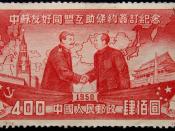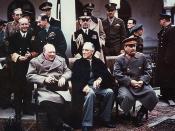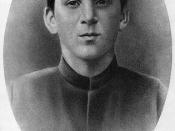In the following essay one is going to discuss what the principles of communism are and how they were implemented in Russia during the rule of Stalin. To make a clear argument the essay is going to deal with two of the most important principles in Communism and see how Stalin implemented either of them through his policies.
One of the main principles of communism is the creation of a classless society but Stalin did not successfully put this into practice since all he did was make the gap more apparent. Before 1929 the society was divided into three different classes: the wealthy government officials, the Kulaks and other people that gained from the NEP, and the proletariat. This however was about to change when in December 29th, 1929 Stalin announced his plan for the Kulaks with the intention of eliminating them as a social class. After categorizing them into the 'actively hostile', 'wealthiest Kulak families' and the 'least harmful' he confiscated all their land and then in 1934 exterminated roughly 1.5-million
of them. By doing this he eliminated them as a social class but at the same time made the division of society even more apparent since there now was no middle class.
Another Communist principle is the equal distribution of wealth. Stalin tried to implement this by his policy of Collectivization but as it can be seen by the fact that there was famine in both 1930 and 1932, he wasn't so successful in doing so. In 1927 Stalin introduced the policy of collectivization where all the small individual farms owned by the peasants were to be pooled together to form a Kolkhoz. This was done to increase food productions in the USSR and at the same time force peasants to move to the towns as more...


